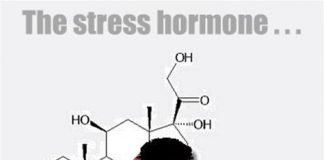In order to stay healthy and function properly, we need the digestive system as it converts food into energy. The digestion system contains many organs that work together to break down the food you eat. They contribute to converting food into energy and nutrients. The digestive system has the gastrointestinal tract which is also known as the GI tract or digestive tract. The GI tract contains the liver, pancreas, and gallbladder. It is time to learn the incredible journey of the food-taking process through the body. In this blog, we have rounded the information about the human digestive system, process, and organs.
Digestive System Process
Wondering how the digestive system functions? The digestion process has six activities, those are
- Propulsion
- Ingestion
- Mechanical or Physical Digestion
- Absorption
- Chemical Digestion
- Defecation
Digestion is necessary to your body because your body requires nutrients from food and drink to work actively and also to maintain your health. Proteins, carbohydrates, fats, vitamins, and water are considered the most important nutrients. The digestive system helps break down the food into nutrients and also breaks into small parts for your body to absorb and utilize for energy, cell repair, and growth.
- Proteins convert into amino acids
- Carbohydrates turned into simple sugars
- Fats converted into fatty acids and glycerol
How Does Food Transfer Through The GI Tract?
Food transfers through the GI tract with a process called peristalsis. The GI tract consists of the layer of muscle that allows its walls to move. This movement moves foods and liquids through the GI tract and blends the contents together within each organ.
Mouth
Food begins to move ahead through the GI tract when you begin to eat. The moment you swallow, the tongue pushes food towards the throat. The epiglottis, a small flap of tissue, helps fold over the windpipe to avoid choking and passes into the esophagus.
Esophagus
During swallowing, the process seems automatic. It takes around 3 seconds to move through the esophagus, based on consistency and texture.
Lower esophageal sphincter
When food at the end of the esophagus, which looks like a ring muscle, known as the lower esophageal sphincter-rests and allows food to pass through the stomach. The sphincter remains closed to keep what is in the stomach from floating back into the esophagus.
Stomach
After food joins the stomach, the stomach muscles blend the food and liquid with digestive juices. Then, the stomach drains its contents, known as chyme, into the small intestine.
Small intestine
The muscles of the small intestine contribute to mixing the food with digestive juices from the pancreas, intestine, liver and move forward for further process. The walls of the small intestine help absorb water and begin digesting it into the bloodstream. Then the waste products of the digestive process shift to the large intestine.
Pancreas
It creates a digestive juice that contains enzymes to help break down fats, proteins, and carbohydrates.
Liver
The liver has several functions to perform and the main function is with the digestive system. Its process is to absorb nutrients from the small intestine.
Gallbladder
It helps store and concentrates bile from the liver. Then it releases to the small intestine so that the small intestine can absorb and digest fats.
Large intestine
The waste products include undigested parts of food, older cells, and fluid. The large intestine’s role is to absorb water and convert the waste of the liquid into the stool. The peristalsis shifts the stool to the rectum.
Rectum
The lower part of the large intestine is known as the rectum that keeps stool till it pushes stool out of the anus in the bowel movement.
Anus
It is the final part of the digestive tract and can detect rectal contents. It helps understand whether the content is liquid, gas, or solid.
The digestive system is very important as your body requires nutrients from the food. It helps get the nutrients from the food you eat or drink. The nutrients are essential to use as energy, repairing cells and growth.















